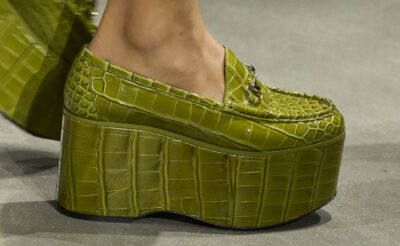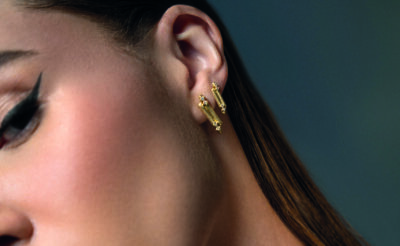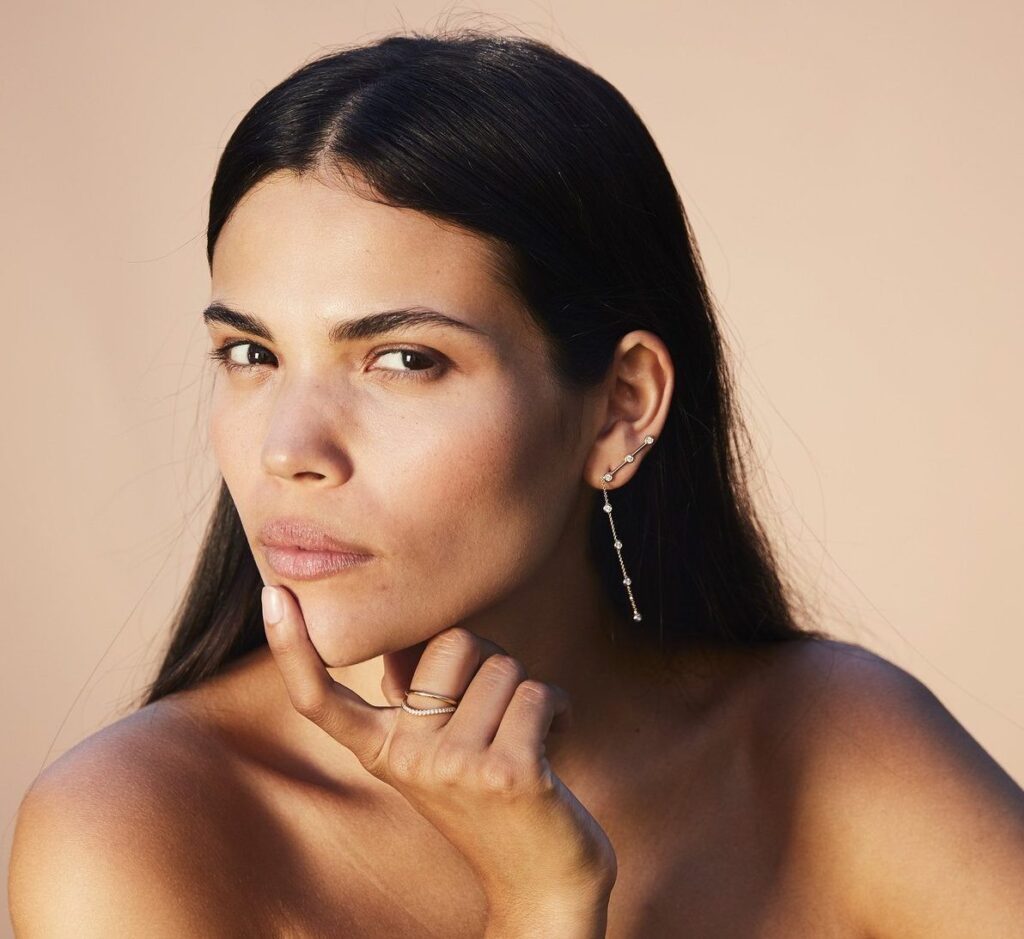
KIMAÏ
Eco-friendly and ethically sourced, lab-grown diamonds are a girl’s new best friend
Just as with our clothes, there are more opportunities than ever to be sustainable and environmentally friendly when it comes to buying jewellery. While leading jewellery houses promote responsible mining, using known sources, recycled materials and certified mines, many labels are now choosing to use laboratory-grown diamonds rather than their natural counterparts, in an effort to have a more ethical and sustainable footprint.
It was just over a year ago that the Duchess of Sussex stepped out wearing a pair of glittering diamond earrings that, rather than being passed down through the family, had been grown in a lab. It took just five days to grow the diamonds adorning Markle’s ears, according to Sidney Neuhaus, co-founder of ethical jewellery brand Kimaï, the company that made them.
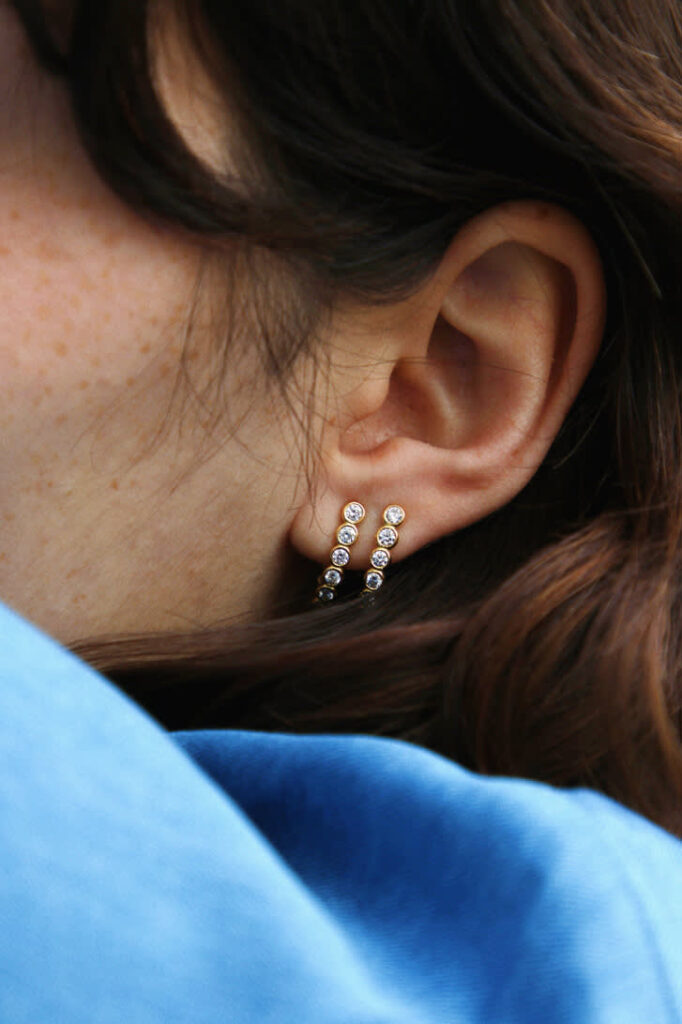
Lab-grown diamond earrings, KIMAÏ
Based in Antwerp, the capital of the world’s diamond business, both she and her co-founder Jessica Warch grew up in diamond families. Nauhaus’s father owns a diamond jewellery shop, and her grandfather worked for De Beers, making his career in diamonds after World War Two.
“My partner and I both come from diamond trading families in Antwerp, Belgium, and have seen first-hand the joy diamonds can bring,” reveals Jessica. “But over the years, we also became aware of the destruction they can cause. When we discovered that man-made diamonds are chemically and physically identical to mined ones, we knew we had to do something.”
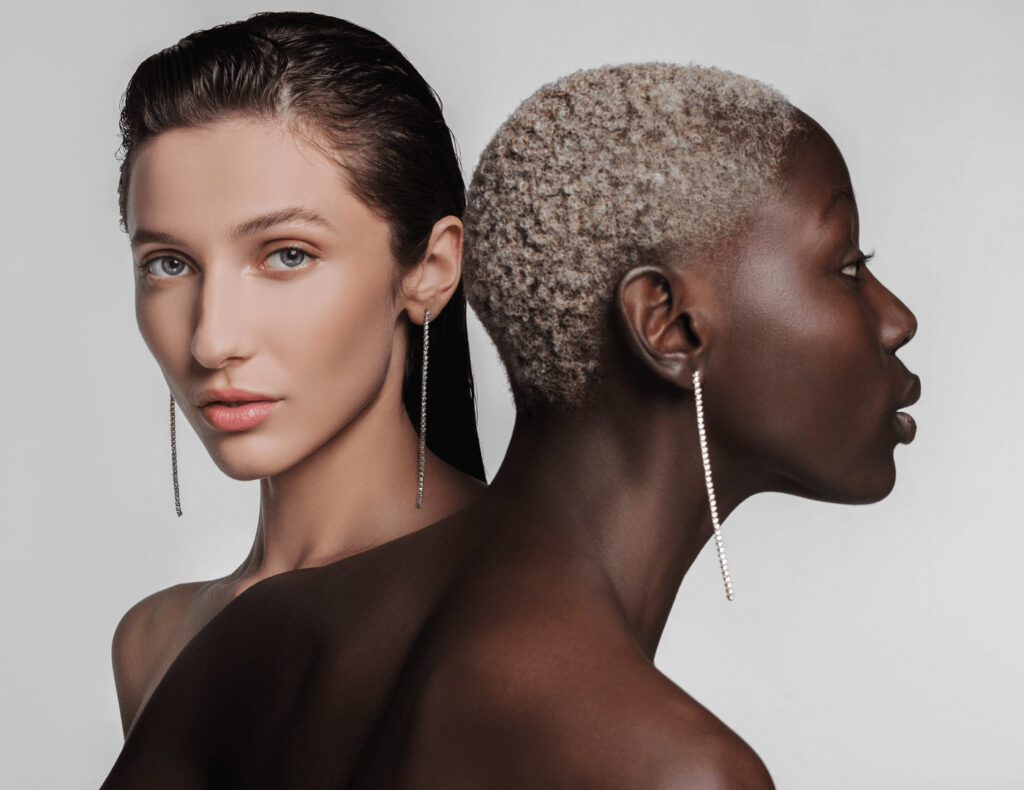
Conflict-free and cultured diamonds, LARK & BERRY
The technology behind lab diamonds has made crucial advances in recent years, allowing companies to grow higher quality diamonds more rapidly and cheaper than before, subsequently increasing competition between lab-diamond and mined-diamond companies. The former’s gems are transforming the market, offering both improved pricing and transparency. And as a new generation of millennial customers move away from conventional diamonds, a lab- grown alternative is gaining traction.
Whether in the form of engagement rings or statement red-carpet jewels, lab-grown diamonds are elementally, physically and visually identical to a mined diamond, with their creators hoping to transform the industry.
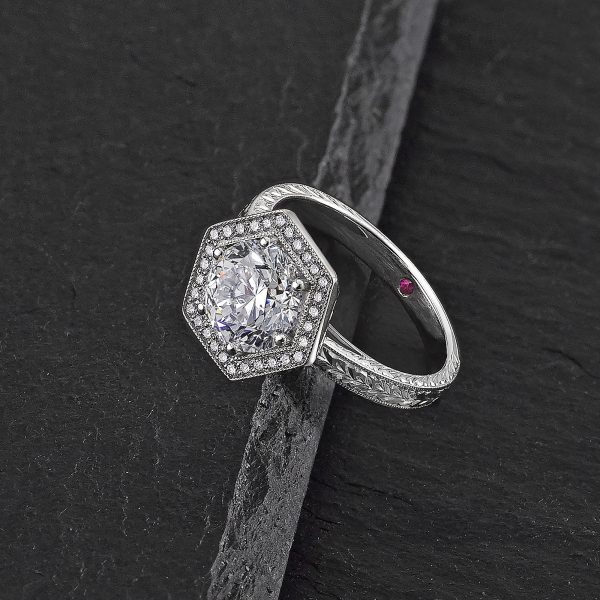
Platinum lab-grown diamond engagement ring, TAYLOR AND HART
Using advanced technology, these diamonds are created in two ways – either by using extreme pressure and heat, or a super-heated plasma – but essentially the work is done inside a machine rather than underground. Once ‘grown’ they are considered identical to diamonds and follow the same system of ratings based on cut, clarity, colour and carat.
A mined diamond usually exchanges hands 10 to 15 times before getting to its final owner, a chain which is now bypassed, offering more transparency on the diamond’s journey. This small slice of the $80 billion diamond industry appears to be broadening.

Consciously sourced stones, KIMAÏ
Last year, Dover Street Market launched a project with Diamond Foundry, together with six designers, including Del na Delettrez and Sophie Bille Brahe, who created jewellery in their own, unique styles using lab-grown diamonds. And earlier this year, Browns Fashion began stocking its first lab-grown diamond and 18K recycled gold brand, Kimaï, which sits alongside its ‘Conscious’ offering.
As to whether or not man-made diamonds can ever replace ‘the real thing’, opinions are mixed. There will always be a premium attached to mined gems, all truly fine jewellery and history’s great jewels have been made with mined diamonds, so they are unlikely to ever be dismissed entirely. But it’s undeniable that man-made diamonds are advancing the future of a very traditional industry, with an impact that cannot be undermined.
- Words by Lucy Bloom

